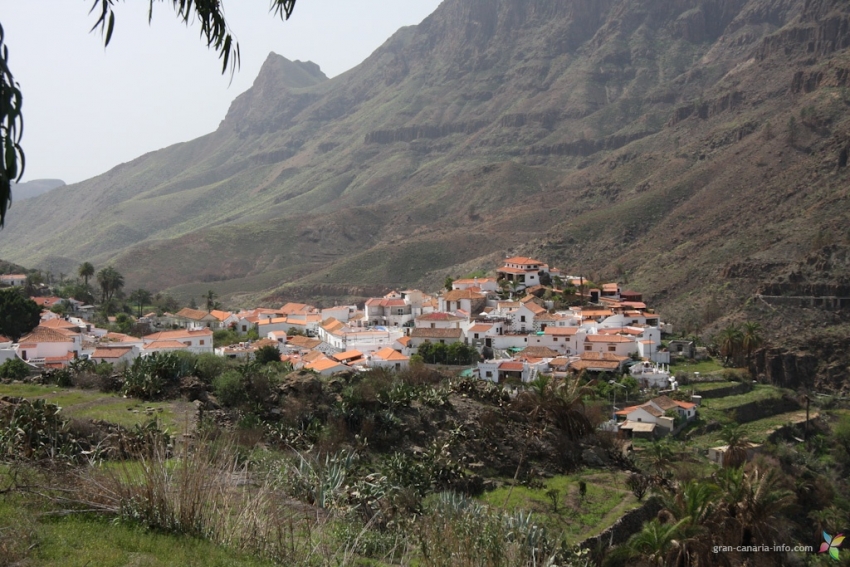Of all the villages in south Gran Canaria, Fataga caters to tourists best. Its restaurants are large enough to handle the coach tour crowds and its shops are well stocked with souvenirs and local produce. However, step away from the short section of the road that is obviously touristy and Fataga remains a traditional Canarian village that lives by farming fruit and making cheese and wine.
A trip to Fataga almost always starts in Playa el Inglés, although you can visit it on the way down the Fataga valley after visiting the highlands. The valley itself is as interesting as the village.
Driving up the GC 60 road from Playa del Inglés (via San Fernando) you soon leave the resorts behind as the road winds up through the dry but attractive foothills. Stop at the Mundo Aborigen theme park fo a surreal glimpse of how the island's original inhabitants used to live, or at the viewpoint overlooking the Degollada de la Yegua; This view of the Fataga valley, known as the valley of 1000 palms, is one of Gran Canaria's best.
Then you drive down a spectacular group of hairpin bends winding their way along steep rock cliffs before seeing the Arteara palm grove. There's a Canarii cemetery hidden amongst the rock scree on the far side of the barranco and its open to visits.
After Arteara, the road continues through a flat section of the valley floor with a couple of camel tour fincas, before climbing up towards the village.
It's well worth parking by the church square in Fataga village and walking into the maze of tiled houses in the oldest part of the village (remember to say buenos dias to the locals).
Just past Fataga, there's an ancient water mill that's been restored and is worth a stop for the photo with the highlands in the background.














